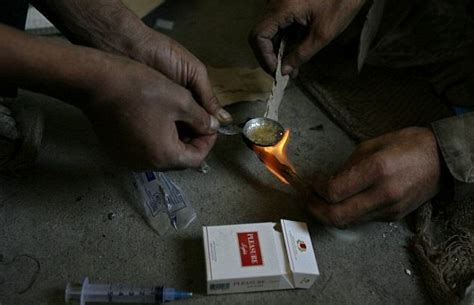Nyaope (also called Whoonga) is one of the cheapest, most widespread and dangerous addictive substances in South Africa. The drug emerged between 2000 and 2006 in the Tshwane townships of Mamelodi, Attridgeville and Soshanguve. It later was found being used and manufactured in Durban in 2010; following that, Nyaope spread like wildfire throughout the provinces of South Africa with one hit costing as little as R20.
The name was coined by drug traffickers but nyaope and whoonga have become the common street slang for the concoctions of substances (like rat poison, household detergents, ammonia, chlorine, ARVs, brown heroin, tik and dagga) used in its manufacture. The new drug names were created to open up new niche markets for familiar drugs that had been in circulation for decades. Later, ARV medications were added to the compound to give it a more distinctive image, but not all whoonga street purchases contain these HIV/AIDS medications.
A Lethal Concoction
The ingredients comprising whoonga vary, some ingredients are a mixturel of anti-retroviral drugs, pool cleaner, milk powder, bicarbonate of soda and milk powder. Typically, whoonga has cannabis as a prominent component, but this is mixed with crystal meth, heroin and other drugs. Street portions contain high volumes of toxic bulk fillers and other cheap powders (for inflating the size of the portion).
ARV (HIV/AIDS) medications are also being added. Some users believe it enhances the drug. This is fueled by ignorance about different, complex ARV formulations. The ARV issue has, however, become a particular problem. These medicines are being stolen from patients and hospitals. They are also sold to drug traffickers by impoverished patients who obtain it through government health programs. This is, in turn hampering the treatment of AIDS.
Due to high addictiveness, the drug leads to further criminality by users who need money to finance their purchases, as well as gang-related “turf wars”.
How is Whoonga Used?
Nyaope is usually consumed by rolling it with tobacco and cannabis into a joint for smoking. In powdery form, it can also be snorted. A more recent development, is the use of a process known as “bluetoothing”. This is achieved by one addict sharing (or selling) their blood to another addict, by means of a minor blood transfusion. A syringe is used for extracting “laden” blood from one user and then injecting it into another user. Nyaope is powerfully addictive; one hit is enough to get hooked.
What are the Effects of Nyaope/Whoonga?
Short term:
Whoonga’s high can lasts a few hours and typically wear off in a 6–24 hour timeframe.Upon use, feelings of euphoria and relaxation can be experienced but this is short-lived and followed by harrowing after effects. When the high wears off withdrawal symptoms such as severe stomach cramps, back ache, sweating, chills, anxiety, aggression, restlessness, depression, nausea and diarrhoea can be experienced.
Both the effects and the withdrawals depend on the mixture that was sold to the user which is related to the volume and symptoms of other drugs (and fillers) which were added to it. In overdose, lung and heart function reduction can be deadly.
Long term:
The most common long term effects are scarred, collapsed and infected veins, damaged heart valves, abscesses and other tissue infections, liver failure, kidney disease and lung problems. Sharing of needles result in hepatitis, AIDS and other transmitted diseases. Mental defects and psychoses are fairly common.
The very random make-up of the drug means that a user is never sure of the outcome. Each batch is different. The mixtures are prepared by incompetent dealers with no medical or ethical regard. As such, a street purchase can consist of conflicting and highly toxic ingredients – combinations that can lead to erratic outcomes and even death.
Treatment for nyaope/whoonga:
As with most drugs, whoonga may first be taken as an ‘escape’ – emotional problems, underlying issues, stress. No one starts off wanting to become an addict, however, addiction is a slippery slope and once you’re caught in it, it is extremely difficult to get out of.
As with all addictions, this one can be treated, but the addict may have to be medically screened to determine the main addiction (usually cannabis and heroin). The appropriate withdrawal treatment can then be administered. The underlying reasons for the addiction are determined by therapeutic means and the applicable therapy is then formulated to set the addict on a new road to self-fulfillment and a better life.
If you, or someone you know, need advice about this drug, please feel free to call us
Extracted from Treatment for Nyaope or Whoonga Addiction in South Africa (recoverydirect.co.za)
Sing praises to God, sing praises: sing praises unto our King, sing praises. For God is the King of all the earth: sing ye praises with understanding” (Ps. 47:6-7).
Note that we are to sing praises “with understanding.” This is what Paul taught, as well. “I will sing with the spirit, and I will sing with the understanding also” (1 Co. 14:15). In the New Testament assembly, the congregational singing must not be a mindless routine. The songs and hymns must be chosen with wise purpose. They must have solid theological content, and the people must be well instructed in the things of God so they can sing with understanding to God and to one another. Extracted D Cloud

